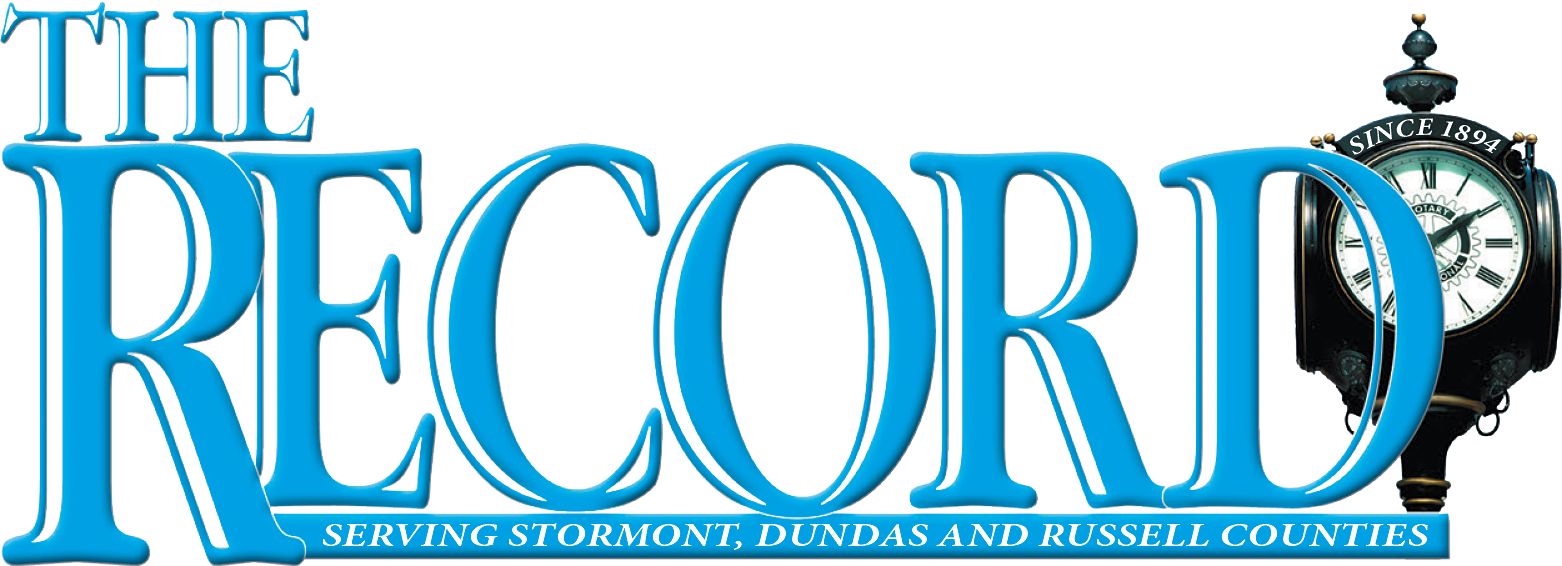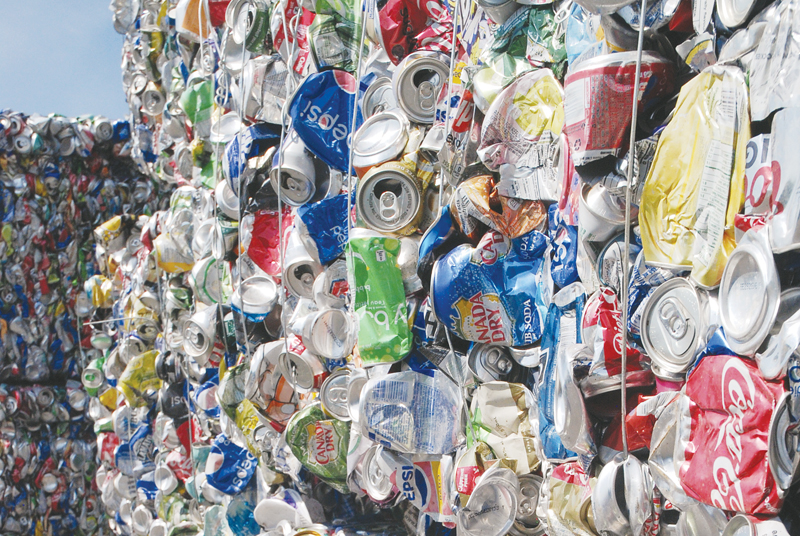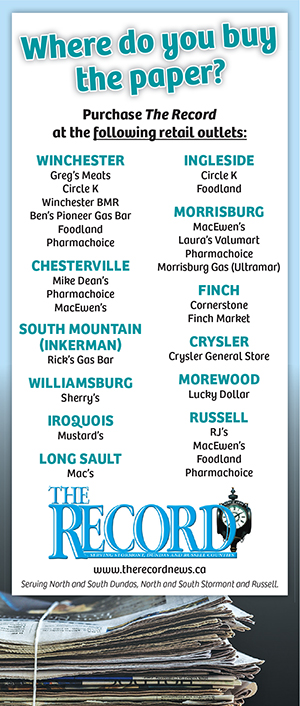Ontario’s “full producer responsibility” recycling model, will mean that producers or creators of the waste will be responsible for collecting and recycling it. These bales of pop cans are just a small amount of what is collected each monh from residents. Morin photo
Tricia Surette
Record Contributor
NORTH DUNDAS – The ubiquitous blue box is an integral part of recycling in Ontario.
Launched in Kitchener in 1981, the program quickly spread across the province. After nearly 40 years, including the last 15 years of stalled progress where up to 30 per cent of its contents has been ending up in a landfill, it’s time for change.
Ontario is moving forward with a “full producer responsibility” recycling model. This means that producers, or the companies responsible for creating the waste, will also be responsible for collecting and recycling it.
Ontario launched the process in 2019, commissioning a report from David Lindsay, who over a six-week period conducted meetings between producers, municipalities and other interested parties. His report was released in August of 2019 and can be found on the Ontario government’s website under waste management.
It is expected to take until 2025 to fully implement the program, including the drafting of legislation and the handover of recycle management from municipalities to producer associations.
“We have such a landmass that we can have all these landfill sites which are almost all full,” said Doug Froats, director of waste management for North Dundas.
“If we added all the landfill capacities together, that’s even up in Northern Ontario and such, there is only 20-23 years left and all the landfills will be full in Ontario.”
For this reason, it’s important that Ontario update the blue box program and bring recycling to a new level.
“When producers – the companies that design, create, and market products and packaging – are responsible for diverting the waste from their goods,” writes Lindsay, “they have incentives to redesign their products, make them easier to recycle and use more recyclable materials. Producers can reintegrate these wastes into new products from reliable streams of recovery.”
The benefits to a producer driven program include the standardizing across the province of items that are accepted in the blue box, streamlining of waste management practices, incentives to producers to improve their packaging to be more recyclable, and the elimination of plastics that are difficult to recycle like plastic film and Styrofoam.
At one time, Ontario sold a lot of its waste overseas to places like China but many of our waste destinations have begun to refuse or limit certain waste.
“When foreign jurisdictions restrict imports of collected materials or require higher-quality materials,” writes Lindsay, “municipalities can be left with materials they can’t sell. One oily pizza box can make a bale of paper too contaminated to recycle. If Ontario is going to continue to run the blue box system, it needs to be cleaned up so that the materials it collects can go back into our economy.”
It’s becoming increasingly important to manage our own waste here at home in Ontario instead of shipping it off to remote destinations. By moving to a producer driven program, it opens opportunities for new jobs across many sectors.
“Garbage and recycling are not just an environmental issue,” writes Lindsay, “they are also an economic opportunity.”
Ontario is still in the early stages of developing the program as there are many steps to the process and a few hurdles yet to clear as far as legislating the program and getting all municipalities and producers on board.
North Dundas expects to see the program come on line in January 2024. If all goes smoothly, residents shouldn’t notice much difference at the curb.
“We’re still going to be picking up the recycling and the waste,” said Froats.
If all goes well, by 2025, according to Froats, North Dundas will be able to knock waste management off the tax base and redirect it to other needs like road maintenance or recreation. When a program can save tax payers money, it’s usually a good thing.











